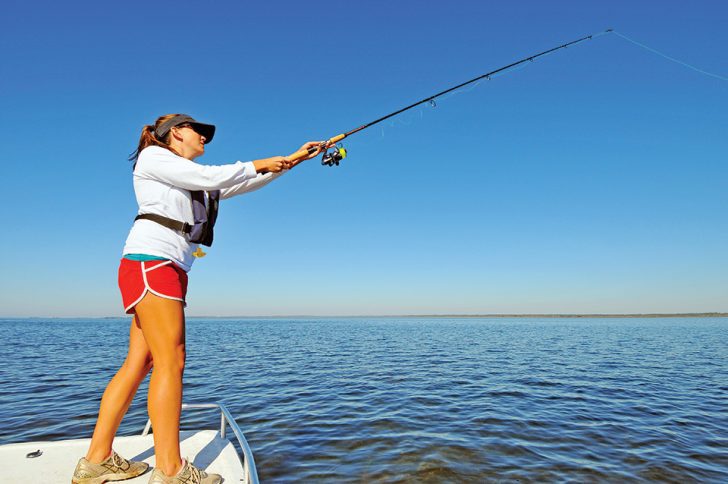Fluorocarbon started as a leader material in saltwater but now is being used by many anglers as a main line on reels. Since it was originally designed for leader use, the early fluorocarbons were very stiff and difficult to use on baitcasting and spinning reels. Anglers using early fluorocarbons often had trouble with line handling, backlashes and the line wanting to “jump off” spinning reels.
Advancements in the production of fluorocarbon have now made it a much better fit for use as a main line. Fluorocarbon remains a great choice for leader materials to be used in conjunction with braided lines. This article covers the advantages of fluoro.
- Increased sensitivity: Fluorocarbon is hard and transmits feedback from your lure better than nylon lines, which are known as monofilament.
- Lower visibility: The light refraction index of fluorocarbon is closer to the refractive index of water than nylon. This makes it less visible in water and a great choice for fish that are line shy. Fluorocarbon is less visible particularly if it is a clearer premium brand.
- Greater abrasion resistance: It is an established fact that fluorocarbon resists abrasion better then nylon. It stands up better where fish live in rocks, reef and wood.
- Less stretch: Fluorocarbon has less stretch than nylon lines, which improves hook penetration on hook sets, especially on long casts. Nylon stretches a yard more than a premium fluorocarbon on a 33-yard cast. Think about that in terms of the force it will take to set the hook.
- Lower water absorption: Nylon lines are often stronger than fluorocarbon until they get wet and absorb water, at which time they weaken. The repeated soaking and drying continues to weaken nylon after long-term use. Fluorocarbon has a very low water absorption rate, so its strength is not impacted in the same way as nylon after repeated use. This allows fluorocarbon to maintain its characteristics longer than nylon lines.
- Higher specific gravity: Nylon lines have a specific gravity of about 1.14, which is only slightly higher than water at 1.0. It will gradually sink, but very slowly. In contrast, fluorocarbon has a specific gravity of 1.78, meaning it sinks in water and lures like crankbaits will run deeper.
- Less impact from ultra-violet light: Lines are exposed to UV light while hanging on the shelf, when stored in a lighted space and during use. Fluorocarbon is less impacted by UV light than the nylon, allowing it to remain stronger, longer.
Unless you’re fishing topwater and need a floating line, or if you’re targeting soft-mouthed fish that require stretchy line to keep from tearing free on the hook-set, the need to learn new knots is the one drawback of fluorocarbon. If you are looking for easy knot instructions for a wide range of knots, check them out on the Sunline website.
For more information, go to sunlineamerica.com
